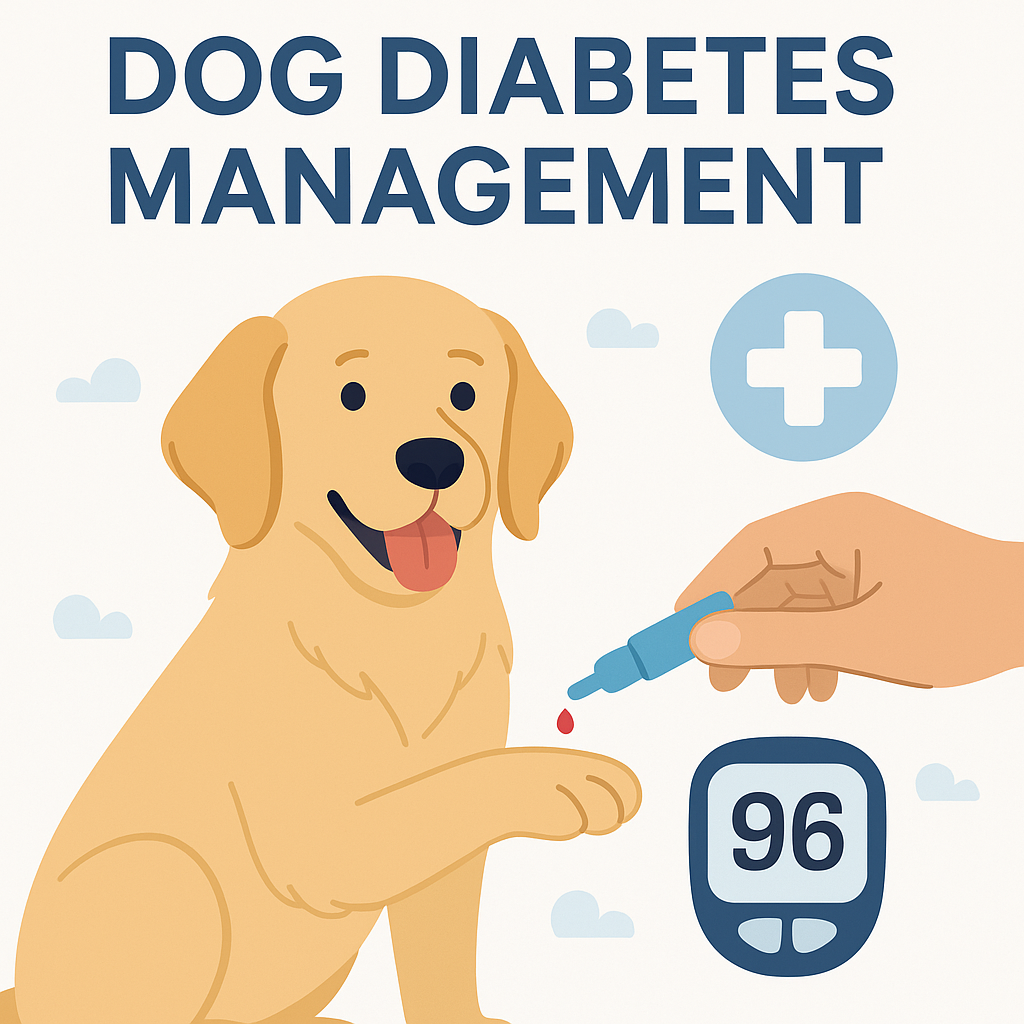
🐾 Dog Diabetes – Best Foods, Foods to Avoid, and Essential Care Tips
Dog Diabetes – Best Foods, Foods to Avoid, and Essential Care Tips
🐾 What is Dog Diabetes?
Dog diabetes occurs when insulin, the hormone responsible for regulating blood glucose, is either insufficient or does not function properly. When insulin function declines, the dog’s body cannot efficiently use energy from food, leading to various health problems.
Middle-aged to senior dogs, overweight dogs, and certain breeds (such as Miniature Schnauzers and Poodles) are at a higher risk of developing diabetes.
🩺 Major Symptoms of Dog Diabetes in Dogs
In the early stages, very subtle changes can appear. Watch out for the following signs:
-
Excessive drinking of water
-
Frequent urination
-
Rapid weight loss
-
Increased appetite but maintaining a thin body condition
-
Lethargy and lack of energy
-
Cloudy eyes or cataract development
-
Vomiting and signs of dehydration
👉 If you notice any of these changes, it’s crucial to seek veterinary care immediately.
⚡ Main Causes of Dog Diabetes
The main causes of diabetes in dogs include:
-
Genetic factors: Certain breeds are more vulnerable.
-
Obesity: Excess weight increases insulin resistance.
-
Hormonal changes: Especially in unspayed female dogs.
-
Underlying diseases: Conditions like pancreatitis affecting the pancreas.
🔍 How Dog Diabetes Is Diagnosed in Dogs
Veterinarians diagnose dog diabetes through:
-
Blood glucose level tests
-
Urinalysis to detect sugar in the urine
-
Additional blood work and kidney function tests
💉 Effective Treatment Methods for Dog Diabetes
Dog diabetes management focuses on control rather than a cure. Typical treatment methods include:
-
Insulin injections: Most dogs require insulin once or twice daily.
-
Dietary management: Maintaining a low-fat, high-fiber diet is essential.
-
Weight control: Keeping the dog at a healthy weight is critical.
-
Regular exercise: Helps regulate blood sugar levels.
-
Frequent blood glucose monitoring: Home testing may be recommended.
🛡️ Tips for Managing Dog Diabetes
-
Do not change food suddenly; transition gradually over time.
-
Create a low-stress environment.
-
Stick to a consistent feeding and walking schedule.
-
Consult a veterinarian before using any supplements.
❓ Frequently Asked Questions About Dog Diabetes (FAQ)
Q1. Does dog diabetes require lifelong management?
A. Yes, diabetes in dogs cannot be cured, so consistent, lifelong management is necessary.
Q2. Can a diabetic dog live a normal life?
A. With proper treatment and care, diabetic dogs can live a happy and healthy life.
(Learn more about our blog)
🥕 Best Foods for Dogs with Diabetes
Choosing the right food can dramatically improve your dog’s condition:
-
High-Fiber Vegetables:
▶️ Broccoli, carrots, sweet potatoes (in moderation), pumpkin, peas -
Low-Fat, High-Protein Foods:
▶️ Boiled chicken breast, turkey, white fish -
Low-Glycemic Kibble:
▶️ Specially formulated diabetic dog foods -
Healthy Oils (in small amounts):
▶️ Salmon oil, fish oil (rich in Omega-3 fatty acids)
🚫 Foods Dogs with Diabetes Should Avoid
Certain foods can cause dangerous blood sugar spikes or stress the pancreas:
-
Sugary Foods:
▶️ Chocolates, candies, cakes, cookies, syrups -
High-Carbohydrate Foods:
▶️ White bread, white rice, pasta, potatoes (large amounts) -
High-Fat Foods:
▶️ Bacon, ham, sausages, cheese -
High-Sugar Fruits:
▶️ Grapes (toxic), raisins (toxic), bananas, mangoes (limit intake) -
Alcohol and Caffeine:
▶️ Extremely harmful, even in small amounts
⚠️ Important Care Tips for Managing a Diabetic Dog
To keep your diabetic dog healthy:
-
Maintain a consistent schedule for feeding and exercise
-
Strictly limit treats: Only diabetic-safe snacks in small amounts
-
Gradually introduce dietary changes over 1–2 weeks
-
Coordinate meal times with insulin injections
(Feeding immediately after injection helps prevent hypoglycemia) -
Always consult your veterinarian before making any changes
-
Provide constant access to clean, fresh water
📝 Summary Table
| Category | Recommended | Not Recommended | Key Care Tips |
|---|---|---|---|
| ✅ | High-fiber vegetables, low-fat proteins, low-glycemic kibble, Omega-3 oils | ❌ | Sugary foods, high-carb foods, high-fat foods, sugary fruits, alcohol/caffeine |
Final Note:
Dog diabetes requires commitment, but with proper diet, medication, and loving care, diabetic dogs can live happy, fulfilling lives. 🐶❤️

